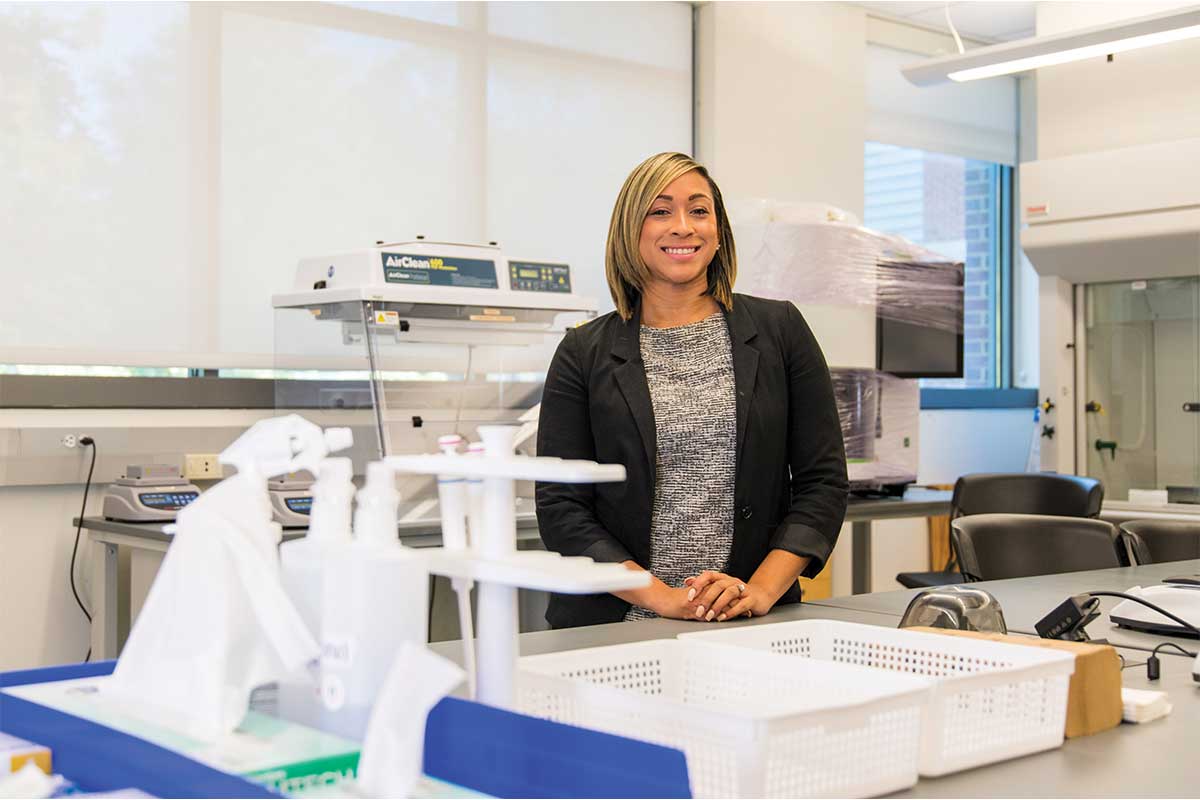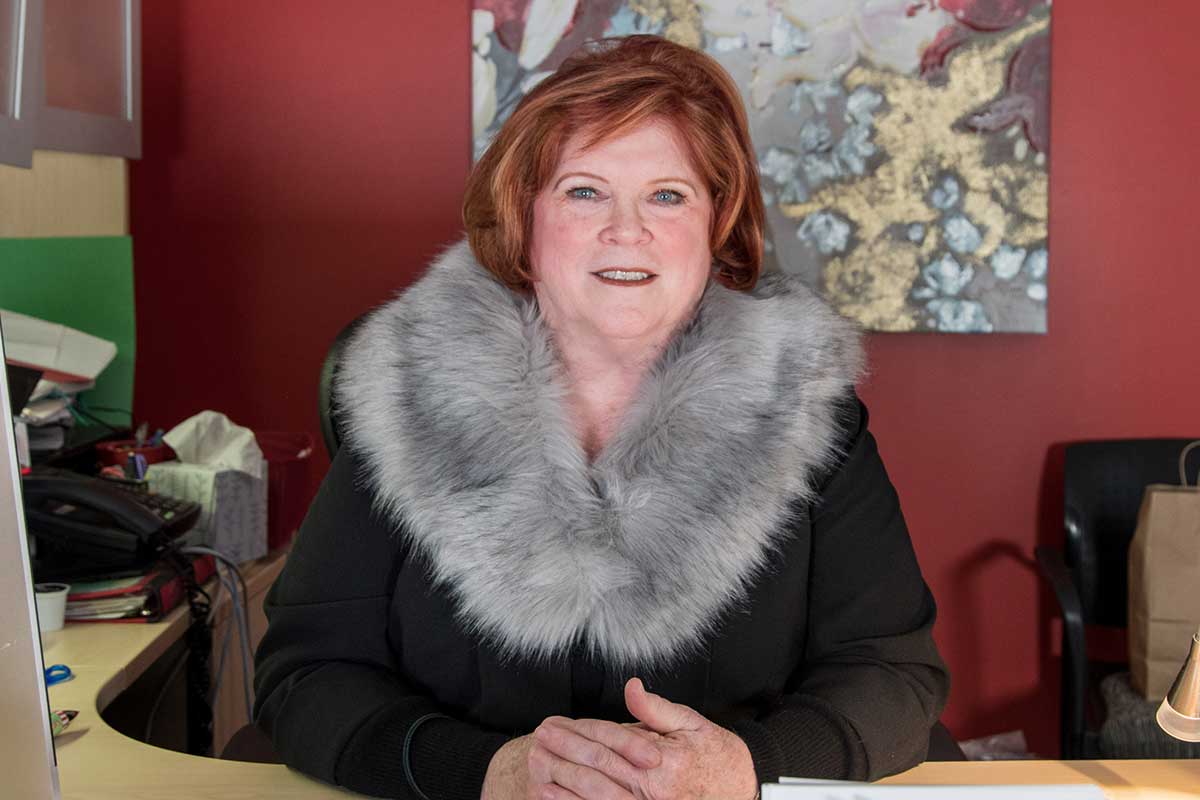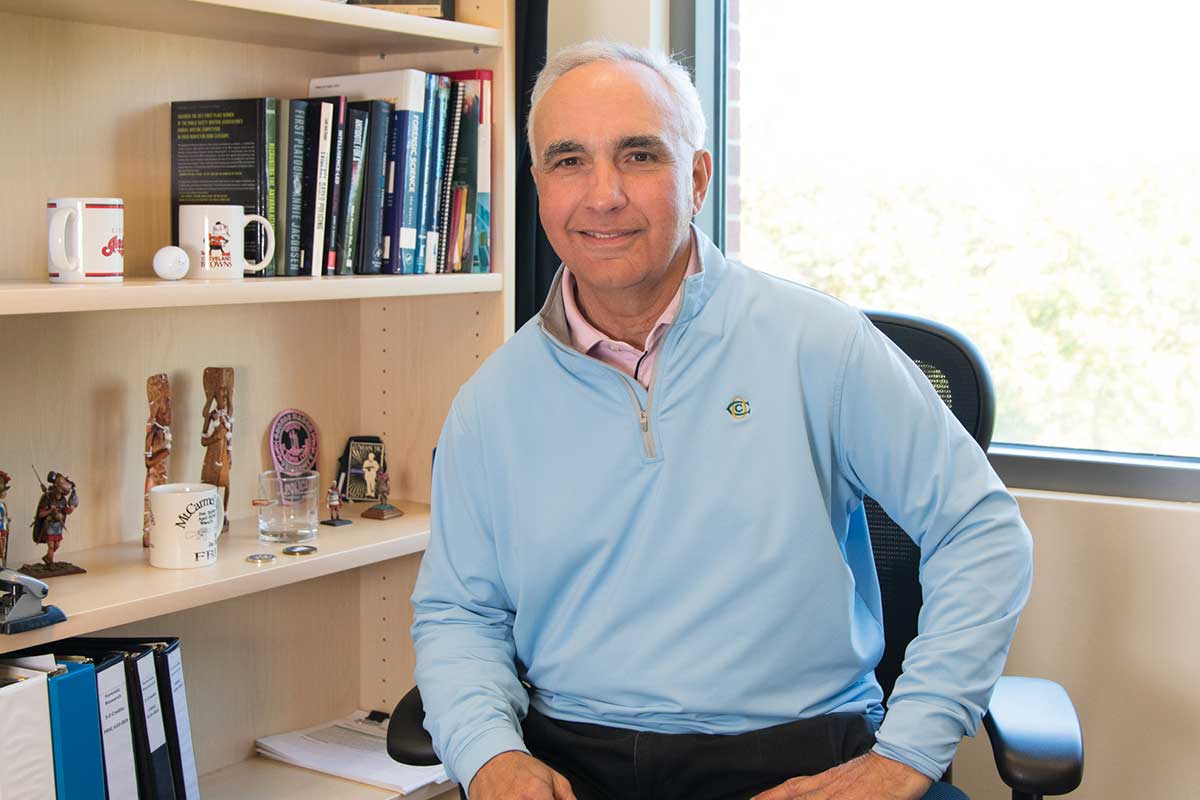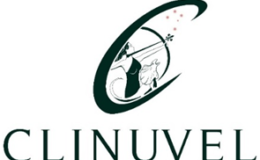
Kelly Knight’s job can lead to unusual parenting moments. “The first time my son’s tooth fell out, he left a note under his pillow asking the tooth fairy to give it back to me,” Knight says, “so that my students could do DNA testing on it.”
A former Maryland State Police forensic DNA analyst, Knight now serves as an associate professor of George Mason University’s forensic science program on the Fairfax campus. Collecting teeth, then, is not outside her norm — and that’s mild compared to some of her other parenting anecdotes. “My kids have been raised in this forensic science environment. Every time they expel some type of biological fluid, I save it. I’m not even joking. I use it for samples in our lab,” Knight says. “I mean, do you know how much it costs to buy blood? So when my kids are bleeding, I’m like, ‘Stop, let me get this.’”

GMU has provided education and hands-on training in forensics since 2008 for graduate students and since 2011 for undergrads. Not too many universities nationwide have similar programs; the only other major program of this sort in Virginia is at Virginia Commonwealth University. GMU’s professors have firsthand experience investigating some of the most prominent forensic cases of recent decades — everything from the Oklahoma City bombing to the Green River Killer to the Unabomber.
This spring, the department will unveil its newest addition: The Forensic Anthropological Research Facility. Commonly referred to as a “body farm,” it is a human decomposition research laboratory housing the bodies of donors. The purpose is to better understand real-life crime and missing person scenes through studying decomposition. State and federal law enforcement will be able to use the facility to train their CSI officers, as well as forensic dogs used in missing person cases and homicides.
The Director
Gallows humor abounds at the department. When we visited the main office in mid-October, two human-sized skeleton decorations greeted us just inside the door wearing masks like the one donned by serial killer character Ghostface from horror movie franchise Scream. A Halloween decoration, surely?
“Technically, yes, but we actually keep the skeletons up year-round,” explains program director Mary Ellen O’Toole. “We’ll put Santa hats on them for Christmas and hearts on them for Valentine’s Day.”
O’Toole has been up close and personal with serial killers, and we’re not talking fictional ones from Courteney Cox movies. An Illinois native, O’Toole spent 29 years with the FBI, and nearly 15 of them with the agency’s Behavioral Analysis Unit, the division most famously portrayed by Jodie Foster’s protagonist Clarice Starling in The Silence of the Lambs.
O’Toole takes issue with the novel and film’s veracity. “When she was given that case, she was still in the training academy!” O’Toole exclaims. “Try 10 to 15 more years.”
Anthony Hopkins’ depiction of imprisoned serial killer Hannibal Lecter also earned her criticism. “I’ve interviewed serial killers. They never ask you about yourself,” while Lecter constantly asks Starling about herself when she interviews him. “They’ll manipulate you, sure. But it’s all about them.”

O’Toole witnessed such manipulation firsthand as one of the only people to ever view the so-called Basement Tapes, the videotaped speeches and manifestos recorded by Eric Harris and Dylan Klebold, the two mass shooters who committed the 1999 Columbine High School massacre in Littleton, Colorado. The students both died by suicide after killing 13 people at the school.
The killers’ private journals were released publicly in 2006 and are even sold as a book today. The videotapes purportedly contain much darker material than the journals, such as strong arguments for copycat behavior. Harris and Klebold intended them for public consumption in an attempt to inspire copycats, but police kept the tapes themselves under wraps — partially thanks to O’Toole — despite their transcripts getting out.
The county sheriff’s office invited O’Toole to Colorado to view the tapes and asked her opinion about whether they should be publicly released. She strongly recommended against it.
“They were a blueprint for somebody else sitting in their basement somewhere. Eric in particular was so compelling; I’ve never seen anything like it in my life,” O’Toole recalls. “He was 18 years old, and he had the ability to reach out from the camera and pull you into what he was talking about. It was absolutely chilling.”
Investigators ended up showing the tapes to reporters for “background purposes only,” although Time and others reported on them in detail. To this day, however, the tapes have not been released.
O’Toole’s advice was also adopted by the powers that be during the 1995 hunt for the Unabomber, the anonymous person sending explosives through the mail. He promised to stop if either The New York Times or The Washington Post published his 35,000-word anti-technology manifesto, “Industrial Society and Its Future,” within three months. The Times, in particular, was hesitant. Would this be caving to a terrorist?
The FBI sent O’Toole and another agent to meet with the Times executive board to argue for publishing the screed. At one point, the Times offered a compromise: Perhaps they could only publish a portion? “No,” O’Toole insisted. “It’s got to be the whole thing.”
The Post ultimately printed the entire manifesto in whole, a decision made jointly with Times leadership and with both newspapers sharing the additional printing costs. The writing style was recognized by David Kaczynski as similar to that of his estranged brother, Ted, who was arrested and later convicted. He was sentenced to life in prison without parole.
After retiring in 2009, O’Toole went into consulting work for a few years, “but I hated my boss.” She has served as the forensic science program’s director since 2015. Although it may seem improbable to some, she admits, “I can’t stand the sight of blood, and I’m scared to death of the dark. But understand what it is I do: not the crime scene itself, but examining evidence, analyzing documents, writing reports.”
Considering the comparatively isolated nature of that type of work, O’Toole remarks of her department’s 25-member faculty, “We’re up to three extroverts now!”
The Faculty
Knight considers herself one of those extroverts. She recently taped an appearance for a cable TV documentary on a high-profile cold case. Rather than dismissing TV depictions of forensics as beneath her, she embraces the medium, assigning episodes from the CBS procedural drama CSI: Crime Scene Investigation as homework.
“I surveyed my students, and 80 percent said they enrolled in our program because of CSI,” Knight says. She says some students aren’t initially aware of the rigor of the program, which includes many required science courses, including upper-level biology, chemistry, and physics.
Students also find themselves unlearning various media tropes. “Don’t actually put [cold and flu medicine] Vicks under your nose when you’re examining a dead body,” Knight advises. “That opens your nasal passages up even more and makes the smell even worse.”
Fellow associate professor Joseph DiZinno also finds he has to dispel media myths for his students — as well as for jurors. Estimating he’s testified in approximately 50 trials as an expert witness, he says jurors commonly believe they’re knowledgeable about forensic science, but that their knowledge is often based on popular TV shows and movies. This is known as the “CSI effect.” (The department’s course catalog includes FRSC 690: Moot Court & Expert Testimony.)

DiZinno previously worked as a dentist, but he sold his dental practice after six years to join the FBI. When he retired in 2008, he was leading the entire FBI Laboratory, the bureau’s forensic unit based out of Quantico.
One of his most prominent cases involved traveling to Waco, Texas, in 1993, following the law enforcement standoff and arson that killed 82 members of the Branch Davidian religious sect. He’d been called upon to conduct forensic dental examinations to help identify the victims’ remains, and was there for about three weeks.
“People often ask what was the most difficult case I ever worked and that was certainly one of them because of the kids,” DiZinno says. “There were a lot of kids involved with that, totally innocent kids that were born into this. Some of them could be identified by fingerprints; some of them could be identified dentally; many of them were identified by DNA eventually.”
The Facilities
Several facilities and initiatives exemplify the university’s hands-on approach.
Opened in 2017, the Crime Scene House contains eight rooms of authentically staged crime scenes, based on real-life scenarios the faculty have encountered. The home features fake bedrooms and living rooms, with mannequins as dead bodies and artificial blood spatter on the floors and walls.
Launched in 2019, the DNA Lab includes state-of-the-art DNA analysis instruments that are similar to those in operational forensic laboratories, allowing students to create DNA profiles from biological evidence samples.
Starting in 2022, the forensic science program’s involvement with the university’s institution-wide Honey Bee Initiative aims to ascertain if the buzzing insect can help solve crimes. Proteins in honey contain biochemical signatures from the bees’ diet, which researchers in other fields have used to determine which specific pesticides were used up to 5 miles from a hive. The forensic faculty are studying whether honey can also contain volatile organic compounds from decomposing human remains, which could help determine the location of missing bodies up to 5 miles away.
Starting in 2023, the forensic program will place its first human donor on the body farm. One inner acre of the 5-acre farm will be designed to replicate outdoor locations where deceased missing persons have been found, or where homicide victims have been left. The donors are deceased individuals who have voluntarily left their remains to science; they will have been screened by the Virginia State Anatomical Program in Richmond for contagious diseases. “Their gift of themselves to science is remarkable,” says O’Toole.
This is the eighth such body farm in the U.S., according to O’Toole. Its location on the Manassas campus consists of plants and wildlife unique to the mid-Atlantic region, which distinguishes it from similar facilities in states like Texas and Florida. The program spent the past year researching and cataloging these features before the placement of human donors, which includes testing the soil, water, and biological species. For investigators, understanding how decomposition in the mid-Atlantic is different based on environmental factors is critical. It can assist in the location and identification of human remains — people who might otherwise never be found.
The area is now open to students who are doing research, and formal classes will likely begin there in late spring, says O’Toole.
The Students
Maddie Bowers, a graduate student and the program’s administrative assistant, admits that she was one of the crime show–obsessed students who had a few tropes to unlearn.
“On NCIS, Abby is always in the lab by herself. She does every single job,” she notes, referencing the CBS show about the Naval Criminal Investigative Service. “In reality, she would only have one job, and there would be many different divisions that do those different things.”

A big part of Abby’s character is that she’s always drinking the fictional high-energy beverage Caf-Pow. “You would definitely not be allowed to have a drink in the lab with you,” says Bowers, who eventually wants to work at the FBI Laboratory.
Fellow grad student Oliver Denaburg says that he initially enrolled as a double major in forensic science and theater, before dropping theater to focus on forensic science.
Preferring a behind-the-scenes job like set designer to being the on-stage talent, Denaburg came to realize it would be very difficult to make a living as a set designer outside of Broadway, which is extremely hard to break into. But with forensic science, Denaburg notes, it’s easier to find a job wherever you live. “They’re always hiring.”
After commencement, a solid number of graduates go on to work for the big kahuna right in their backyard: the FBI. However, just as many students find careers working for other federal agencies, as well as for state and local law enforcement. And who knows? Years down the line, some may even return to become faculty themselves and educate the next generation.
After all, Knight herself was originally inspired to enter the field by the prior generation. Her father wasn’t in forensics — he worked for the Federal Aviation Administration — but he always encouraged his daughter to love science. “When I was a little girl, he would buy pig brains for me to dissect,” Knight remembers. “I put on a pink tutu and played with it like Barbies.” It seems she’s passing on her love of science — and refusal to be grossed out — to the next generation as well.
This story originally ran in our January issue. For more stories like this, subscribe to our monthly magazine.














